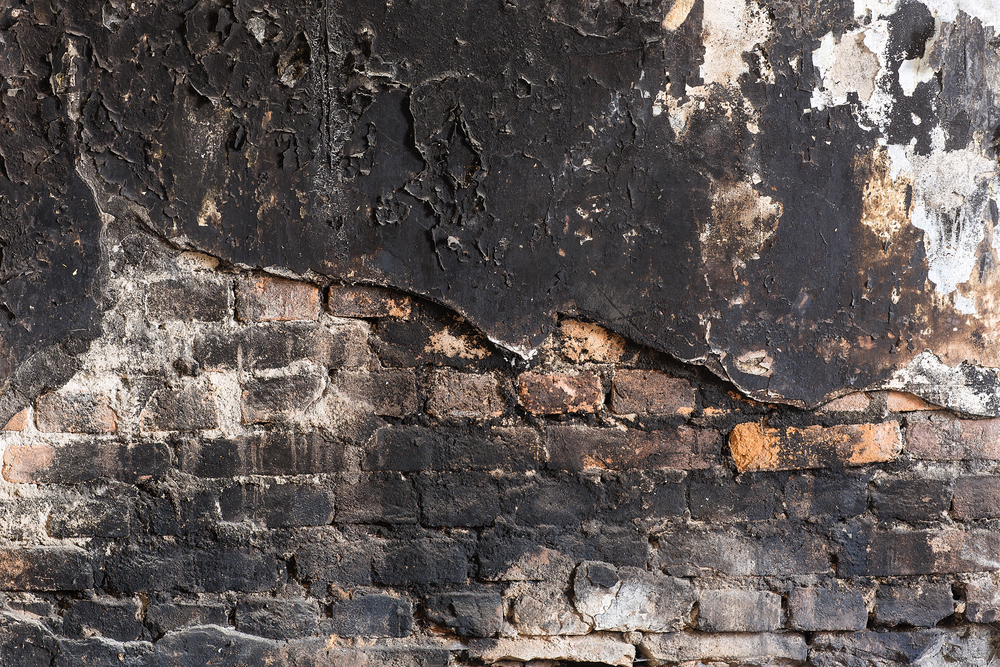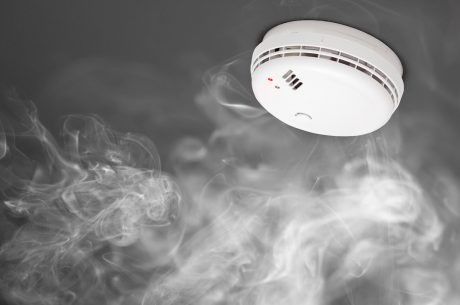Table of Contents
When a fire or heavy smoke event affects your property, one of the biggest challenges you’ll face is restoring your smoke damaged walls. Beyond the visible stains, smoke can leave behind stubborn odors, toxins, and residue that seep deep into surfaces. In this guide, we’ll show you exactly how professionals restore your walls from initial assessment to odor removal, sealing, and repainting. You’ll also learn when to call restoration experts like PuroClean of Coral Gables, who can bring your home back to its original comfort and safety.
What Are Smoke Damaged Walls?
Smoke damaged walls are the result of soot, ash, and oily residue settling on and within your walls after a fire or smoke incident. Even a small kitchen fire or furnace puff-back can cause extensive smoke damage. Because walls are porous, they absorb fine particles and chemicals from the smoke, leading to discoloration, corrosion, and long-lasting odors.
Over time, the acidic nature of soot can continue eating away at surfaces, causing paint to peel, metal fixtures to rust, and drywall to weaken. What looks like a cosmetic issue can actually affect the structure and indoor air quality of your home.
Why You Should Act Quickly on Smoke Damaged Walls
1. Health Risks
Soot and smoke residue contain carbon, tar, and other harmful particles. These contaminants can trigger allergies, respiratory issues, or even long-term health problems if not properly removed. Lingering smoke particles may also cause eye and skin irritation, especially in children, pets, and seniors.
2. Structural and Aesthetic Damage
Smoke not only stains your walls—it seeps deep inside them. Over time, this can lead to permanent discoloration, flaking paint, or even weakened drywall. The longer you wait to address smoke damaged walls, the harder it becomes to restore them.
3. Persistent Odor
That lingering “burnt” smell after a fire comes from smoke residue trapped inside walls, ceilings, and even air ducts. Without proper deodorization techniques, the odor can linger for months and reappear whenever humidity rises.
Professional vs. DIY: When to Hire Experts
If the smoke damage is minor—say, limited to a single wall or a small area—you might try cleaning it yourself. However, professional restoration becomes necessary when:
- You notice thick soot buildup or oily residue on walls and ceilings.
- The smell remains even after thorough cleaning.
- The fire or smoke damage affects multiple rooms.
- Your insurance requires certified documentation of the cleanup.
Certified professionals like PuroClean of Coral Gables use industrial-grade equipment and proven techniques that ensure both visible and invisible damage are handled safely and completely. Attempting deep cleaning without proper protection can spread soot particles further and expose you to harmful toxins.
Step-By-Step: How to Fix Smoke Damaged Walls
Here’s how professionals tackle smoke damaged walls from start to finish.
Step 1: Assessment and Safety Preparation
Before cleaning begins, a thorough inspection is conducted to identify the extent of the damage. Professionals look for soot patterns, discoloration, and odor intensity to determine the best restoration plan.
Safety comes first—technicians wear gloves, masks, goggles, and protective clothing to prevent exposure to soot and chemical residues. Proper ventilation is set up to ensure contaminated air is safely filtered out of the space.
Step 2: Removing Loose Soot and Debris
The first layer of soot is gently removed using specialized HEPA vacuums or soft brushes. This dry cleaning stage prevents smearing and keeps residue from embedding deeper into the wall surface.
Ceilings are often cleaned first, followed by walls, to prevent soot from falling onto already-cleaned areas. This careful approach minimizes recontamination and ensures a more effective clean.
Step 3: Deep Cleaning and Neutralization
Next comes the real cleaning work. Depending on the level of damage, restoration professionals may use:
- Dry-cleaning sponges (chemical sponges): These lift soot without water, ideal for light or powdery soot.
- Trisodium Phosphate (TSP) or professional cleaning solutions: For heavier or oily soot deposits.
- Vinegar or mild detergent solutions: Used in controlled amounts for light cleaning.
Each section of the wall is cleaned carefully in small patches, avoiding excessive moisture that can weaken drywall. Once cleaning is complete, the area is rinsed and dried thoroughly.
Step 4: Odor Removal and Air Purification
Even after visible stains are gone, odor molecules can linger deep within wall cavities and insulation. Professionals use advanced odor-neutralizing treatments such as:
- Thermal fogging: A heated deodorizing mist that penetrates hidden areas.
- Ozone or hydroxyl generators: Machines that break down odor molecules in the air.
- Air scrubbers: HEPA-filtered devices that remove airborne contaminants and soot particles.
Additionally, HVAC ducts are cleaned to prevent the smoke smell from recirculating throughout the property.
Step 5: Sealing and Repainting
Once the walls are fully cleaned and dried, a stain-blocking primer is applied to seal any remaining odors or discoloration. This step ensures that future paint adheres properly and that smoke stains won’t bleed through.
After priming, the walls are repainted with high-quality paint that restores a fresh, clean appearance. For heavily damaged walls, new drywall or plaster may be installed before painting.
Step 6: Repair and Restoration
If the smoke exposure was severe, sections of the wall or insulation may need replacing. Professionals remove compromised materials, repair structural issues, and rebuild affected areas.
This step might include repainting adjacent surfaces, replacing trim, or restoring electrical outlets and fixtures affected by heat or soot.
Step 7: Final Inspection and Air Quality Testing
Before declaring the job complete, a final inspection ensures that no odor, soot, or discoloration remains. Some companies also perform air-quality testing to verify that your home’s environment is safe to live in again.
Common Mistakes to Avoid When Cleaning Smoke Damaged Walls
Even with good intentions, homeowners often make mistakes that worsen the problem. Here are some to watch out for:
- Painting over soot: This only hides the problem temporarily. Without cleaning and priming, stains and odors will reappear.
- Skipping HVAC cleaning: Smoke travels through vents and ducts, spreading odor and contaminants back into cleaned spaces.
- Scrubbing too aggressively: This can smear soot or push it deeper into the wall surface.
- Ignoring hidden areas: Cabinets, closets, attics, and crawl spaces often harbor smoke residue that can re-contaminate the home later.
- Delaying cleanup: The longer soot sits, the harder it is to remove and the greater the risk of permanent damage.
FAQs About Smoke Damaged Walls
Q1: Can I clean smoke damaged walls myself?
You can clean mild surface damage yourself using dry-cleaning sponges and gentle cleaners. However, if you see thick soot, oily residue, or strong odors, it’s best to call professionals to avoid spreading contaminants or causing more damage.
Q2: How much does professional smoke damage restoration cost?
The cost depends on the size of the affected area, type of soot, and whether structural repairs are needed. Professionals typically provide a free or low-cost assessment before beginning work.
Q3: Will the smell ever completely go away?
Yes—when handled properly. With thorough cleaning, deodorizing treatments, and sealing, the odor can be eliminated permanently.
Q4: Does homeowners insurance cover smoke damaged walls?
In most cases, yes. Smoke and fire damage are typically covered under standard homeowners policies, especially if caused by an accidental fire. Always document the damage before starting repairs.
Q5: How long should I wait before repainting?
Walls should be completely cleaned and dry before repainting. Depending on humidity and ventilation, this can take 24–72 hours. Always use a stain-blocking primer first.
Q6: What if the drywall is too damaged?
If the smoke has penetrated deeply or the drywall shows signs of softening or odor that won’t go away, replacement is the only way to ensure a clean and safe wall.
Why Choose Professional Help from PuroClean of Coral Gables
When dealing with smoke damaged walls, you need more than just cleaning—you need a full restoration that ensures safety, comfort, and peace of mind. That’s where PuroClean of Coral Gables comes in.
Their trained technicians specialize in fire and smoke damage restoration, offering:
- 24/7 emergency response: Because smoke damage can worsen by the hour.
- Fast assessment and cleanup: Advanced tools for soot removal and surface restoration.
- Odor elimination: Ozone and thermal fogging to ensure lasting freshness.
- Structural repair and repainting: Complete solutions that go beyond surface cleaning.
- Compassionate service: A team that treats your home like their own.
Whether it’s a small kitchen smoke incident or an entire home affected by fire, PuroClean of Coral Gables provides a one-stop solution to restore your home and your peace of mind.

Final Summary
Smoke damaged walls can look intimidating, but with the right approach, they can be restored to their former beauty. The key steps are fast action, thorough cleaning, odor removal, sealing, and repainting. While light damage can be handled with DIY care, more serious cases call for professional restoration.
If your home in the Coral Gables area has suffered from smoke damage, don’t wait. Contact PuroClean of Coral Gables today. Their experts will remove the smoke, restore your walls, and help you breathe easy again in a home that feels brand new.


